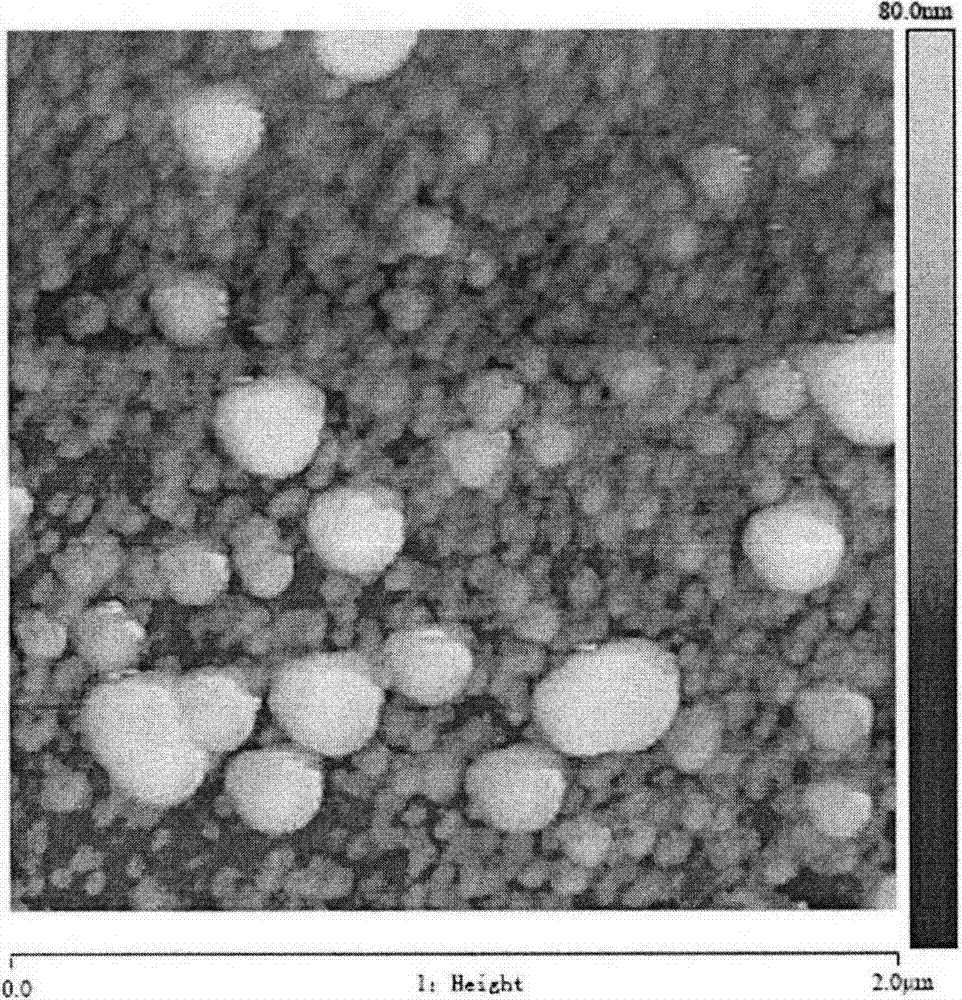Preparation and application of intracellular triggering reduction sensitive drug linked gene targeted co-carrier
A technology of internal triggering and delivery body, which can be used in drug combination, gene therapy, nanomedicine, etc., and can solve the problems of high cost, complicated preparation, and inability to be used repeatedly in vivo.
- Summary
- Abstract
- Description
- Claims
- Application Information
AI Technical Summary
Problems solved by technology
Method used
Image
Examples
Embodiment 1
[0031] Synthesis and Characterization of Disulfide Bonded Low Molecular Weight Polyethyleneimine
[0032] (1) Synthesis conditions
[0033] Weigh 1 g (0.56 mmol) of polyethyleneimine (Mw=1800), place it in a three-neck round bottom flask, and add 9 ml of methanol-water (80%) to dissolve it. Weigh 0.07g (0.28mmol) of N,N'-bis(acryl)cystamine, add 1ml of methanol-water (80%) to dissolve, and slowly drop it into the three-necked flask. Stir, react at 55°C for 3 days under nitrogen protection and in the dark. Purified by dialysis and freeze-dried to obtain disulfide cross-linked low molecular weight polyethyleneimine.
[0034] (2) Structural characterization
[0035] Take an appropriate amount of disulfide cross-linked low molecular weight polyethyleneimine dry pure product, dissolve in D 2 O, by NMR ( 1 H-NMR) to confirm the results. polyethyleneimine 1 In the H-NMR spectrum, the characteristic peaks are concentrated at 2.5-2.9; while the low molecular weight polyethylenei...
Embodiment 2
[0037] Preparation and Quality Evaluation of Nanoparticles
[0038] (1) Preparation of nanoparticles
[0039] Prepare 20mg / ml disulfide bond crosslinked low molecular weight polyethyleneimine acetone stock solution: weigh 0.2g disulfide bond crosslinked low molecular weight polyethyleneimine, add 0.05g Tween 80, dissolve in 10ml acetone, Protect from light, sonicate to dissolve.
[0040] Organic phase solution preparation: Weigh 0.2 g of polylactide-glycolide copolymer (10,000Da50:50), add 0.1 g of Tween 80, dissolve in 2 ml of dichloromethane, and ultrasonically dissolve. Add 1ml of disulfide bond cross-linked low molecular weight polyethyleneimine acetone stock solution, add acetone to 10ml, and mix well.
[0041] Preparation of aqueous phase solution: Weigh 0.5g of poloxamer 188 and dissolve in 10ml of water.
[0042] The organic phase was added to the aqueous phase, and the mixed solution was sonicated for 15 min using an ultrasonic cell pulverizer. Rotary steam at 45°...
Embodiment 3
[0047] Modification of hyaluronic acid and evaluation in vitro and in vivo
[0048] (1) Hyaluronic Acid Modification
[0049] Non-covalent binding: Take an appropriate amount of drug-loaded nanoparticles, add hyaluronic acid solution, mix and incubate for 15 minutes to obtain hyaluronic acid-modified nanoparticles.
[0050] Covalent binding: mix an appropriate amount of hyaluronic acid solution and drug-loaded nanoparticles, add 1.0mol / L hydrochloric acid, and make the pH of the reactant reach 6.5. Another appropriate amount of 1-ethyl-(3-dimethylaminopropyl) carbodiimide hydrochloride and N-hydroxysuccinimide was dissolved in dimethyl sulfoxide-water (50%), Then slowly add into the reactant solution, stir and mix at room temperature for 24 hours, then adjust the pH with 1.0 mol / L sodium hydroxide. After dialysis, freeze-dry to obtain hyaluronic acid-modified nanoparticles.
[0051] Take an appropriate amount of hyaluronic acid-modified nanoparticles, mix with the siRNA sol...
PUM
| Property | Measurement | Unit |
|---|---|---|
| molecular weight | aaaaa | aaaaa |
| molecular weight | aaaaa | aaaaa |
| molecular weight | aaaaa | aaaaa |
Abstract
Description
Claims
Application Information
 Login to View More
Login to View More - R&D
- Intellectual Property
- Life Sciences
- Materials
- Tech Scout
- Unparalleled Data Quality
- Higher Quality Content
- 60% Fewer Hallucinations
Browse by: Latest US Patents, China's latest patents, Technical Efficacy Thesaurus, Application Domain, Technology Topic, Popular Technical Reports.
© 2025 PatSnap. All rights reserved.Legal|Privacy policy|Modern Slavery Act Transparency Statement|Sitemap|About US| Contact US: help@patsnap.com



